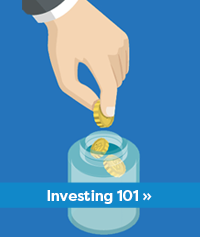Withdrawing From Your Registered Retirement Savings Plan

Approximately 65% of Canadians are currently saving for retirement. One of the most common retirement savings vehicles is the Registered Retirement Savings Plan (RRSP). The average Canadian retires at the age of 63, so many people begin withdrawing their retirement savings at this point in their life. No matter when you decide to withdraw your savings, there are three main options associated with using the funds in your RRSP:
1. Withdrawals – You can make withdrawals from your RRSPs at any time provided the funds are not held in a term deposit investment. The full amount in your RRSP must be withdrawn or converted to a RRIF by December 31st of the year in which you turn 71. If the balance is less than $5,000.00 at the end of the year you turn 71, and you haven't withdrawn your funds, your banking institution will close out your RRSP account and provide you with the full amount that you are owed.
2. Registered Retirement Income Fund (RRIF) – Another common way to deal with your RRSP funds is to move them into a RRIF. A RRIF is similar to an RRSP except that it requires you to take minimum annual withdrawals from your account. The timing of these withdrawals can be scheduled to suit your lifestyle, so you can receive regular payments, just as you would when you were working. With a RRIF, you also still have control over your investment and can withdraw additional funds if you need to. Again, these withdrawals will be taxed as income.
3. Annuity – The third option for your RRSP funds is to move them into an annuity. An annuity is a type of investment that you purchase and receive a set monthly payment from while the rest of the money is invested. The downside of the annuity is that your funds are locked into the contract and you can’t withdraw additional funds, should you need them.
If you are considering regularly withdrawing funds from your RRSPs before you turn 71, it could be beneficial to consider using one of the these three options a little sooner. You will still be taxed on your withdrawals but you can at least avoid the RRSP withdrawal service fees. As mentioned before, any withdrawals from these accounts are considered income, so they could also affect income based benefits that you receive, like your Canadian Pension Plan or Old Age Security. If you are able to withdraw smaller amounts of money over a longer period of time, this could be a good option in order to take full advantage of your savings without affecting your other benefits.
1. Withdrawals – You can make withdrawals from your RRSPs at any time provided the funds are not held in a term deposit investment. The full amount in your RRSP must be withdrawn or converted to a RRIF by December 31st of the year in which you turn 71. If the balance is less than $5,000.00 at the end of the year you turn 71, and you haven't withdrawn your funds, your banking institution will close out your RRSP account and provide you with the full amount that you are owed.
2. Registered Retirement Income Fund (RRIF) – Another common way to deal with your RRSP funds is to move them into a RRIF. A RRIF is similar to an RRSP except that it requires you to take minimum annual withdrawals from your account. The timing of these withdrawals can be scheduled to suit your lifestyle, so you can receive regular payments, just as you would when you were working. With a RRIF, you also still have control over your investment and can withdraw additional funds if you need to. Again, these withdrawals will be taxed as income.
3. Annuity – The third option for your RRSP funds is to move them into an annuity. An annuity is a type of investment that you purchase and receive a set monthly payment from while the rest of the money is invested. The downside of the annuity is that your funds are locked into the contract and you can’t withdraw additional funds, should you need them.
If you are considering regularly withdrawing funds from your RRSPs before you turn 71, it could be beneficial to consider using one of the these three options a little sooner. You will still be taxed on your withdrawals but you can at least avoid the RRSP withdrawal service fees. As mentioned before, any withdrawals from these accounts are considered income, so they could also affect income based benefits that you receive, like your Canadian Pension Plan or Old Age Security. If you are able to withdraw smaller amounts of money over a longer period of time, this could be a good option in order to take full advantage of your savings without affecting your other benefits.
For more information about managing your investments, what to do with your RRSP funds or if you have questions about retirement planning, one of our knowledgeable Financial Advisors would be pleased to speak with you. To connect with the CUA team member nearest to you, call 902.492.6500.
Revised Jul. 16, 2021
Revised Jul. 16, 2021





